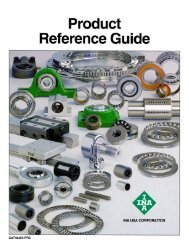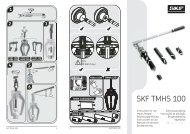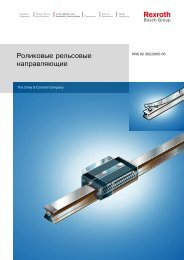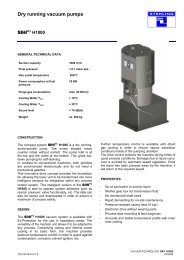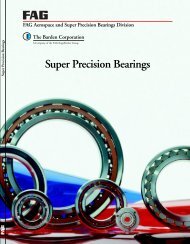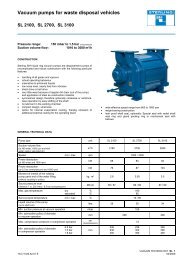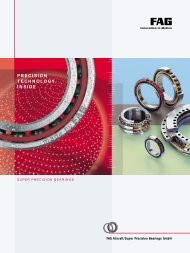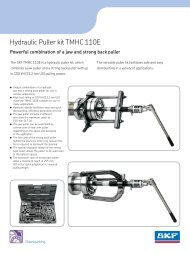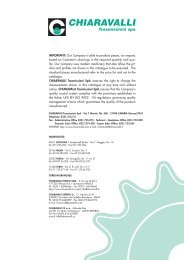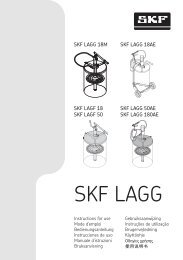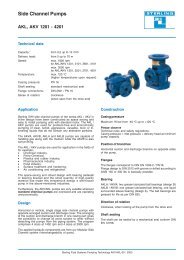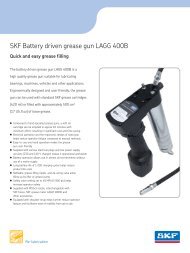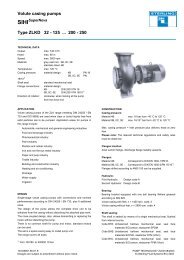High Precision Ball Bearings - Kraftmek
High Precision Ball Bearings - Kraftmek
High Precision Ball Bearings - Kraftmek
You also want an ePaper? Increase the reach of your titles
YUMPU automatically turns print PDFs into web optimized ePapers that Google loves.
Service life of grease – Lubrication intervals<br />
The lubricating interval is defined on principle as the<br />
value for a 10 to 20% probability of failure of the service<br />
life of the grease.<br />
The service life of the grease is essentially dependent<br />
on the influencing parameters<br />
• Grease<br />
• Operating conditions<br />
• Design<br />
Therefore, the selection of the grease is of decisive<br />
importance. In the opposite graph 1 (reproduced from<br />
the Recommendations 2.4.1 of the Society of Tribology),<br />
the lubricating interval t f is plotted against the operating<br />
speed and the limiting speed of grease lubrication. It<br />
provides guiding values for the service life and applies<br />
to lithium soap grease up to an operating temperature<br />
of +70 °C (measured on the outer ring) and moderate<br />
conditions of loading (P/C < 0.1).<br />
Special environmental factors, such as humidity and<br />
vibration will decrease the lubricating interval to 1/5 of<br />
the initial value.<br />
Unusual conditions of operation<br />
e.g. extreme temperatures and high loading (P/C > 0.1)<br />
call for special greases. These greases will enable longer<br />
lubricating intervals to be achieved than those obtained<br />
from the graph.<br />
Lubricating intervals of more than 5 years are possible<br />
only under very favourable environmental conditions.<br />
Reduction in lubricating intervals at high<br />
temperatures<br />
The degradation of the lubricating greases increases<br />
considerably at higher temperatures. A temperature<br />
increase by 15 K, starting at 70 °C, will decrease the<br />
lubricating interval to half the initial value, particularly<br />
with lithium greases. Guidance is provided by the<br />
graph 2.<br />
Lubricating interval t f [h]<br />
Reduction factor<br />
50 000<br />
30 000<br />
20 000<br />
10 000<br />
5 000<br />
3 000<br />
2 000<br />
1 000<br />
500<br />
300<br />
200<br />
100<br />
Graph 1<br />
1.0<br />
0.5<br />
0.25<br />
0.1<br />
0.05<br />
0.025<br />
0.2 0.3 0.5 1 2 3 5 10 20 30 50<br />
n fett<br />
Speed ratio<br />
n<br />
· K L<br />
KL = 1.6 Coefficient for spindle bearings<br />
KL = 1.8 Coefficient for deep groove<br />
bearings<br />
... for bearing calculation<br />
0.01<br />
0.75 1.0 1.25 1.5 1.75 2.0<br />
Graph 2<br />
t/tR<br />
t = Bearing temperature<br />
t R = Limiting temperature where<br />
lubricating interval reduction<br />
starts (for lithium greases<br />
for instance 70° C)<br />
37



